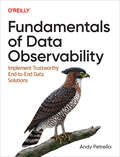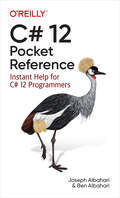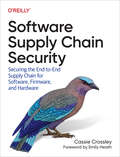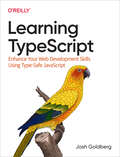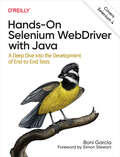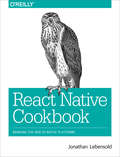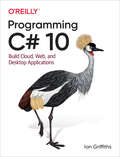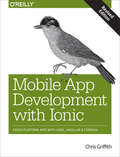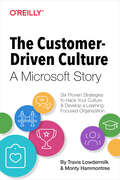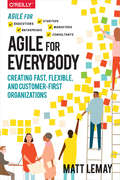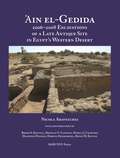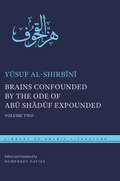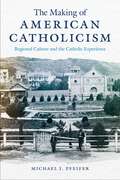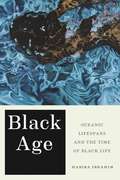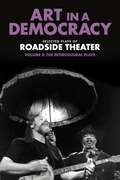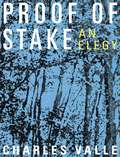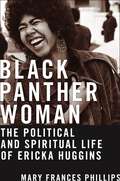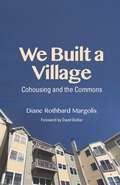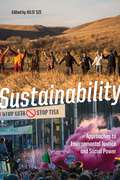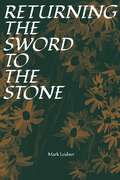- Table View
- List View
Prevention and Mitigation of Bridge and Tunnel Strikes
by Transportation Research Board National Academies of Sciences, Engineering, and Medicine Yang Li Xiao Qin National Cooperative Highway Research Program Neil Janes Hannah Silber Dan D'Angelo Jason J. Bittner Sam Arnold Bob Scopatz Frank Gross Mohammad Wael Amer Andrew Graettinger Habib TabatabaiThere has been an increase in bridge and tunnel strikes in the United States, presenting significant hazards to both the vehicles involved and the structural integrity of bridges and tunnels. Nationally, there are over 15,000 bridge strikes annually, costing millions of dollars in repairs and posing serious safety risks. The pressing need for a comprehensive solution is evident. NCHRP Web-Only Document 411: Prevention and Mitigation of Bridge and Tunnel Strikes, from TRB’s National Cooperative Highway Research Program, is supplemental to NCHRP Research Report 1132: Bridge and Tunnel Strikes: A Guide for Prevention and Mitigation.
Guide for Truck Parking Information Management Systems
by Chuck Miller Dan Murray Transportation Research Board National Academies of Sciences, Engineering, and Medicine National Cooperative Highway Research Program Ernie Perry Matt Junak Gui Leao Chris Lindsey Peter RaffertyRecent studies of truck parking demand and capacity constraints reflect a consensus that truck parking demand exceeds the available supply in many public rest areas and private truck stops nationwide. NCHRP Research Report 1137: Guide for Truck Parking Information Management Systems, from TRB’s National Cooperative Highway Research Program, provides information on these systems that help address the need to provide safer parking options for commercial vehicle operators and reduce the time they take to search for parking through the collection and dissemination of real-time parking availability using a variety of technologies. Supplemental to the report is NCHRP Web-Only Document 415: Developing a Guide for Truck Parking Information Management Systems.
Leveraging Trust to Advance Science, Engineering, and Medicine in the Black Community: Proceedings of a Workshop
by Policy and Global Affairs National Academies of Sciences, Engineering, and Medicine Health and Medicine Division Roundtable on Black Men and Black Women in Science, Engineering, and MedicineFor many Black Americans, trust in science, engineering, and medicine (SEM) institutions is affected by historic and current contexts, with significant consequences including exacerbating health and economic inequities for this population. Many SEM professionals recognize the importance of building trust with the Black community, and are looking for sustainable and effective ways to earn and nurture that trust. To advance SEM issues within the Black community, the Roundtable on Black Men and Black Women in Science, Engineering, and Medicine at the National Academies of Sciences, Engineering, and Medicine convened a public workshop to examine local, national, and global strategies used by groups such as the Black Church to build institutional trust. The workshop, held December 14-15, 2022, was structured to identify organizations that have demonstrated success in building and maintaining trust with Black communities, highlight best practices for SEM professionals to develop sustainable and effective relationships with the Black community, and examine how communication with Black communities influences trust and acceptance of SEM institutions.
A Research Agenda Toward Atmospheric Methane Removal
by Division on Engineering and Physical Sciences Division on Earth and Life Studies Board on Chemical Sciences and Technology Board on Atmospheric Sciences and Climate Board on Energy and Environmental Systems National Academies of Sciences, Engineering, and Medicine Committee on Atmospheric Methane Removal: Development of a Research Agenda2023 shattered global climate records as the warmest year in the modern record, bringing with it devastating impacts on human and natural systems. Methane emissions, about 60% of which come from human activities, are a major contributor to global warming, second only to carbon dioxide (CO2). Methane is relatively short-lived in the atmosphere but is 80 times more potent than CO2 at trapping heat over a 20-year period. Together with reducing CO2 emissions, rapid and sustained reductions in methane emissions are critical to limit both near- and long-term warming in future decades. But given the many barriers to achieving needed emissions reductions at scale, researchers are exploring the potential of technologies to remove methane from the atmosphere. A Research Agenda Toward Atmospheric Methane Removal is the first report of a two-phase study to assess the need and potential for atmospheric methane removal. This report identifies priority research that should be addressed within 3-5 years so that a second-phase assessment could more robustly assess the technical, economic, and social viability of technologies to remove atmospheric methane at climate-relevant scales. The research agenda presented in this report includes foundational research that would help us better understand atmospheric methane removal while also filling knowledge gaps in related fields, and systems research that seek to address what developing and/or deploying atmospheric methane removal at scale would entail. A Research Agenda Toward Atmospheric Methane Removal also assesses five atmospheric methane removal technologies that would accelerate the conversion of methane to a less radiatively potent form or physically remove methane from the atmosphere and store it elsewhere.
Tracking Safety Leading Indicators to Improve DOT Employee Safety Performance
by Transportation Research Board National Academies of Sciences, Engineering, and Medicine National Cooperative Highway Research Program Roy E. Sturgill Jr. Gabriel B. DadiLagging indicators in occupational safety and health are required reporting figures that provide an industry-standard metric to measure the number of employees injured annually or impacted by a recordable injury. Recognizing the weaknesses of traditional lagging indicators to proactively manage occupational safety, many organizations and industries have emphasized safety leading indicators; that is, metrics to identify safety-related activities to consider before an incident occurs. NCHRP Synthesis 637: Tracking Safety Leading Indicators to Improve DOT Employee Safety Performance, from TRB’s National Cooperative Highway Research Program, explores issues related to safety leading indicator practices used by state departments of transportation (DOTs) to track and prevent occupational injuries and other incidents. The synthesis also includes findings from a survey related to safety leading indicators of practices used by state DOTs.
Fundamentals of Data Observability: Implement Trustworthy End-to-End Data Solutions
by Andy PetrellaQuickly detect, troubleshoot, and prevent a wide range of data issues through data observability, a set of best practices that enables data teams to gain greater visibility of data and its usage. If you're a data engineer, data architect, or machine learning engineer who depends on the quality of your data, this book shows you how to focus on the practical aspects of introducing data observability in your everyday work. Author Andy Petrella helps you build the right habits to identify and solve data issues, such as data drifts and poor quality, so you can stop their propagation in data applications, pipelines, and analytics. You'll learn ways to introduce data observability, including setting up a framework for generating and collecting all the information you need. Learn the core principles and benefits of data observabilityUse data observability to detect, troubleshoot, and prevent data issuesFollow the book's recipes to implement observability in your data projectsUse data observability to create a trustworthy communication framework with data consumersLearn how to educate your peers about the benefits of data observability
C# 12 Pocket Reference: Instant Help for C# 12 Programmers
by Ben Albahari Joseph AlbahariLooking for quick answers for using C# 12? This tightly focused and practical guide tells you exactly what you need to know without long intros or bloated samples. Succinct and easy to browse, this pocket reference is an ideal quick source of information. If you know Java, C++, or an earlier C# version, this guide will help you get rapidly up to speed.All programs and code snippets are available as interactive samples in LINQPad. You can edit these samples and instantly see the results without needing to set up projects in Visual Studio.
Software Supply Chain Security: Securing the End-to-End Supply Chain for Software, Firmware, and Hardware
by Cassie CrossleyTrillions of lines of code help us in our lives, companies, and organizations. But just a single software cybersecurity vulnerability can stop entire companies from doing business and cause billions of dollars in revenue loss and business recovery. Securing the creation and deployment of software, also known as software supply chain security, goes well beyond the software development process.This practical book gives you a comprehensive look at security risks and identifies the practical controls you need to incorporate into your end-to-end software supply chain. Author Cassie Crossley demonstrates how and why everyone involved in the supply chain needs to participate if your organization is to improve the security posture of its software, firmware, and hardware.With this book, you'll learn how to:Pinpoint the cybersecurity risks in each part of your organization's software supply chainIdentify the roles that participate in the supply chain—including IT, development, operations, manufacturing, and procurementDesign initiatives and controls for each part of the supply chain using existing frameworks and referencesImplement secure development lifecycle, source code security, software build management, and software transparency practicesEvaluate third-party risk in your supply chain
Learning TypeScript: Enhance Your Web Development Skills Using Type-Safe JavaScript
by Josh GoldbergTypeScript has conquered the world of JavaScript. Identified in developer surveys as one of the world's fastest growing and most popular languages, TypeScript is widely used in consumer and business companies across the world and is frequently credited for helping massive web applications scale. But what exactly is TypeScript? How and why does it work, and how can we use it?This practical book takes beginner and advanced JavaScript programmers alike from knowing nothing about "types" or "type systems" to full mastery of TypeScript fundamentals.You'll learn:Benefits of TypeScript and general characteristics of its type systemWhy and how TypeScript is useful on top of "vanilla" JavaScriptHow to inform your type system by using development-only type annotationsHow TypeScript analyzes and understands code to help you augment your existing development patternsHow TypeScript helps you work with arrays, classes, functions, objects, and other important built-in JavaScript constructsHow to effectively use the plethora of TypeScript configuration options to tailor the TypeScript compiler to your teams and projectsA variety of IDE integrations such as automated refactors and intelligent code searches provided by TypeScript to help you develop quickly with fewer bugs
Hands-On Selenium WebDriver with Java: A Deep Dive into the Development of End-to-End Tests
by Boni GarciaGet started with Selenium WebDriver, the open source library for automating tests to ensure your web application performs as expected. In this practical hands-on book, author Boni Garcia takes Java developers through Selenium's main features for automating web navigation, browser manipulation, web element interaction, and more, with ready-to-be-executed test examples.You'll start by learning the core features of Selenium (composed of WebDriver, Grid, and IDE) and its ecosystem. Discover why Selenium WebDriver is the de facto library for developing end-to-end tests on your web application. You'll explore ways to use advanced Selenium WebDriver features, including using web browsers in Docker containers or the DevTools protocol. Selenium WebDriver examples in this book are available on GitHub.With this book, you'll learn how to:Set up a Java project containing end-to-end tests that use Selenium WebDriverConduct automated interaction with web applicationsUse strategies for managing browser-specific capabilities and cross-browser testingInteract with web forms, manage pop-up messages, and execute JavaScriptControl remote browsers and use advanced browser infrastructure for Selenium WebDriver tests in the cloudModel web pages using object-oriented classes to ease test maintenance and reduce code duplication
React Native Cookbook: Bringing the Web to Native Platforms
by Jonathan LebensoldTackling an app development project on multiple platforms is no simple task. When time is in short supply and customers need access from the tap of a home screen, React Native can provide a lean development team with the tools needed to deliver a multi-platform native experience without juggling multiple programming languages and shifting code bases. React Native is an emerging technology and best practices are only beginning to bubble up.Fortunately, a growing user community—from tech giants such as Facebook, Yahoo, and Airbnb to the independent developers—is hard at work codifying patterns and best practices for how to use React Native. This cookbook is another milestone on that journey.Aimed at people with some JavaScript and web development experience, the first part of this cookbook covers some simple tips for getting started with React Native. Part 2 will cover some emerging patterns that are commonly found in most native applications.
Programming C# 10: Build Cloud, Web, and Desktop Applications
by Ian GriffithsC# is undeniably one of the most versatile programming languages available to engineers today. With this comprehensive guide, you'll learn just how powerful the combination of C# and .NET can be. Author Ian Griffiths guides you through C# 10.0 and .NET 6 fundamentals and techniques for building cloud, web, and desktop applications.Designed for experienced programmers, this book provides many code examples to help you work with the nuts and bolts of C#, such as generics, LINQ, and asynchronous programming features. You'll get up to speed on .NET 6 and the latest C# 9.0 and 10.0 additions, including records, enhanced pattern matching, and new features designed to remove "ceremony" to improve productivity.Understand how .NET has changed in the most recent releases, and learn what it means for application developmentSelect the most appropriate C# language features for any taskLearn when to use the new features and when to stick with older onesExamine the range of functionality available in .NET's class librariesLearn how you can apply these class libraries to practical programming tasksExplore numerous small additions to .NET that improve expressiveness"Unlike books that focus on Visual Studio and technologies that interact with C#, this one covers the core language, and mastery of this core is essential to successfully building good software. It covers important concepts followed by generous code examples to explain them. It's thorough, detailed, and gets at the nooks and crannies of the language rarely covered elsewhere. It's a complete course on C#."--Jeremy MorganSoftware/DevOps EngineerIan Griffiths has worked in various aspects of computing, including computer networking, embedded real-time systems, broadcast television systems, medical imaging, and all forms of cloud computing. Ian is a Technical Fellow at endjin, and a Microsoft MVP in Developer Technologies. He's the author of several O'Reilly books and has written courses on Windows Presentation Foundation (WPF) and TPL Tables. Technology brings him joy.
Mobile App Development with Ionic, Revised Edition: Cross-Platform Apps with Ionic, Angular, and Cordova
by Chris GriffithLearn how to build app store-ready hybrid apps with the Ionic 2, the framework built on top of Apache Cordova (formerly PhoneGap) and Angular. This revised guide shows you how to use Ionic’s tools and services to develop apps with HTML, CSS, and TypeScript, rather than rely on platform-specific solutions found in Android, iOS, and Windows Phone.Author Chris Griffith takes you step-by-step through Ionic’s powerful collection of UI components, and then helps you use it to build three cross-platform mobile apps. Whether you’re new to this framework or have been working with Ionic 1, this book is ideal for beginning, intermediate, and advanced web developers.Understand what a hybrid mobile app is, and what comprises a basic Ionic applicationLearn how Ionic leverages Apache Cordova, Angular, and TypeScript to create native mobile applicationsCreate a Firebase-enabled to-do application that stores data across multiple clientsBuild a tab-based National Park explorer app with Google Map integrationDevelop a weather app with the Darksky weather API and Google’s GeoCode APIDebug and test your app to resolve issues that arise during developmentWalk through steps for deploying your app to native app storesLearn how Ionic can be used to create Progressive Web Apps
The Customer-Driven Culture: Six Proven Strategies to Hack Your Culture and Develop a Learning-Focused Organization
by Travis Lowdermilk Monty HammontreeIf you’re striving to make products and services that your customers will love, then you’ll need a customer-driven organization. As companies transform their businesses to meet the demands of the digital age, they find themselves grappling with uniquely human challenges. Organizational knowledge becomes siloed, employees move to safeguard their expertise, and customer data creates polarization and infighting between teams. All of these challenges widen the distance between the people who make your products and the customers who use them.To meet today’s challenges, companies need to do more than build processes for customer-driven products. They need to create a customer-driven culture.With the help of his friend and mentor Monty Hammontree, Travis Lowdermilk takes readers through the cultural transformation of the Developer Division at Microsoft. This book shows readers how to "hack" their culture and reduce the distance between them and their customers’ needs. It’s a uniquely personal story that’s told amidst a cultural revolution at one of the largest software companies in the world.This story acts as your guide. You’ll learn how to:Establish a Common Language: Help employees change their thinking and actionsBuild Bridges, Not Walls: Treat product building as a team sportEncourage Learning Versus Knowing: Help your team understand their customersBuild Leaders That Build Your Culture: Showcase star employees to inspire othersMeet Teams Where They Are: Make it easy for teams to to adopt vital behavior changesMake Data Relatable: Move beyond numbers and focus on empathizing with customers
Agile for Everybody: Creating Fast, Flexible, and Customer-First Organizations
by Matt LeMayThe Agile movement provides real, actionable answers to the question that keeps many company leaders awake at night: How do we stay successful in a fast-changing and unpredictable world? Agile has already transformed how modern companies build and deliver software. This practical book demonstrates how entire organizations—from product managers and engineers to marketers and executives—can put Agile to work.Author Matt LeMay explains Agile in clear, jargon-free terms and provides concrete and actionable steps to help any team put its values and principles into practice. Examples from a wide variety of organizations, including small nonprofits and global financial enterprises, bring to life the on-the-ground realities of Agile across industries and functions.Understand exactly what Agile is and why it mattersUse Agile to address your organization’s specific needs and goalsTake customer centricity from theory into practiceStop wasting time in "report and critique" meetings and start making better decisionsCreate a harmonious cycle of learning, collaborating, and deliveringLearn from Agile experts at companies like IBM, Spotify, and Coca-Cola
'Ain el-Gedida: 2006-2008 Excavations of a Late Antique Site in Egypt's Western Desert (Amheida IV) (ISAW Monographs #8)
by Nicola AravecchiaThe fourth volume in the Amheida series, ‘Ain el-Gedida: 2006-2008 Excavations of a Late Antique Site in Egypt's Western Desert (Amheida IV) presents the systematic record and interpretation of the archaeological evidence from the excavations at ‘Ain el-Gedida, a fourth-century rural settlement in Egypt's Dakleh Oasis uniquely important for the study of early Egyptian Christianity and previously known only from written sources.Nicola Aravecchia (Washington University), the Deputy Field Director of NYU's Amheida Excavations, offers a history of the site and its excavations, followed by an integrated topographical and archaeological interpretation of the site and its significance for the history of Christianity in Egypt. In the second half of the volume a team of international experts presents catalogs and interpretations of the archaeological finds, including ceramics (Delphine Dixneuf, CRNS), coins (David M. Ratzan, NYU), ostraca and graffiti (Roger S. Bagnall, NYU and Dorota Dzierzbicka, University of Warsaw), small finds (Dorota Dzierzbicka, University of Warsaw), and zooarcheological remains (Pamela J. Crabtree, NYU and Douglas Campana).
Brains Confounded by the Ode of Abū Shādūf Expounded: Volume Two (Library of Arabic Literature #Volume Two)
by Yūsuf al-ShirbīnīUnique in pre-twentieth-century Arabic literature for taking the countryside as its central theme, Yūsuf al-Shirbīnī’s Brains Confounded combines a mordant satire on seventeenth-century Egyptian rural society with a hilarious parody of the verse-and-commentary genre so beloved by scholars of his day.In Volume One, al-Shirbīnī describes the three rural “types”—peasant cultivator, village man-of-religion and rural dervish—offering numerous anecdotes testifying to the ignorance, dirtiness, illiteracy, lack of proper religious understanding, and criminality of each. He follows it in Volume Two with a 47-line poem supposedly written by a peasant named Abū Shādūf, who charts the rise and fall of his fortunes and bewails, above all, the lack of access to delicious foods to which his poverty has condemned him. Wielding the scholarly tools of elite literature, al-Shirbīnī responds to the poem with derision and ridicule, dotting his satire of the ignorant rustic with numerous digressions into love, food, and flatulence.Witty, bawdy, and vicious, Brains Confounded belongs to an unrecognized genre from an understudied period in Egypt’s Ottoman history, and is a work of outstanding importance for the study of pre-modern colloquial Egyptian Arabic, pitting the “coarse” rural masses against the “refined” and urbane in a contest for cultural and religious primacy, with a heavy emphasis on the writing of verse as a yardstick of social acceptability. A bilingual Arabic-English edition.
The Making of American Catholicism: Regional Culture and the Catholic Experience
by Michael J. PfeiferTraces the development of Catholic cultures in the South, the Midwest, the West, and the Northeast, and their contribution to larger patterns of Catholicism in the United StatesMost histories of American Catholicism take a national focus, leading to a homogenization of American Catholicism that misses much of the local complexity that has marked how Catholicism developed differently in different parts of the country. Such histories often treat northeastern Catholicism, such as the Irish Catholicism of Boston, as if it reflects the full history and experience of Catholicism across the United States.The Making of American Catholicism argues that regional and transnational relationships have been central to the development of American Catholicism. The American Catholic experience has diverged significantly among regions; if we do not examine how it has taken shape in local cultures, we miss a lot. Exploring the history of Catholic cultures in New Orleans, Iowa, Wisconsin, Los Angeles, and New York City, the volume assesses the role of region in American Catholic history, carefully exploring the development of American Catholic cultures across the continental United States.Drawing on extensive archival research, The Making of American Catholicism argues that American Catholicism developed as transnational Catholics creatively adapted their devotional and ideological practices in particular American regional contexts. They emphasized notions of republicanism, individualistic capitalism, race, ethnicity, and gender, resulting in a unique form of Catholicism that dominates the United States today. The book offers close attention to race and racism in American Catholicism, including the historical experiences of African American and Latinx Catholics as well as Catholics of European descent.
Black Age: Oceanic Lifespans and the Time of Black Life
by Habiba IbrahimHONORABLE MENTION, HARRY SHAW AND KATRINA HAZZARD-DONALD AWARD FOR OUTSTANDING WORK IN AFRICAN-AMERICAN POPULAR CULTURE STUDIES, GIVEN BY THE POP CULTURE ASSOCIATIONA view of transatlantic slavery’s afterlife and modern Blackness through the lens of ageAlthough more than fifty years apart, the murders of Emmett Till and Trayvon Martin share a commonality: Black children are not seen as children. Time and time again, excuses for police brutality and aggression—particularly against Black children— concern the victim “appearing” as a threat. But why and how is the perceived “appearance” of Black persons so completely separated from common perceptions of age and time? Black Age: Oceanic Lifespans and the Time of Black Life posits age, life stages, and lifespans as a central lens through which to view Blackness, particularly with regard to the history of transatlantic slavery. Focusing on Black literary culture of the late twentieth and early twenty-first centuries, Habiba Ibrahim examines how the history of transatlantic slavery and the constitution of modern Blackness has been reimagined through the embodiment of age. She argues that Black age—through nearly four centuries of subjugation— has become contingent, malleable, and suited for the needs of enslavement. As a result, rather than the number of years lived or a developmental life stage, Black age came to signify exchange value, historical under-development, timelessness, and other fantasies borne out of Black exclusion from the human.Ibrahim asks: What constitutes a normative timeline of maturation for Black girls when “all the women”—all the canonically feminized adults—“are white”? How does a “slave” become a “man” when adulthood is foreclosed to Black subjects of any gender? Black Age tracks the struggle between the abuses of Black exclusion from Western humanism and the reclamation of non-normative Black life, arguing that, if some of us are brave, it is because we dare to live lives considered incomprehensible within a schema of “human time.”
Art in a Democracy: Selected Plays of Roadside Theater, Volume 2: The Intercultural Plays, 1990–2020
by Ben FinkCollaborative plays with diverse ensembles across the country address pressing issues of our timesThe plays in Volume 2 come from Roadside’s intercultural and issue-specific theater work, including long-term collaborations with the African American Junebug Productions in New Orleans and the Puerto Rican Pregones Theater in the South Bronx, as well as with residents on both sides of the walls of recently-built prisons. Roadside has spent 45 years searching for what art in a democracy might look like. The anthology raises questions such as, What are common principles and common barriers to achieving democracy across disciplines, and how can the disciplines unite in common democratic cause?
Proof of Stake: An Elegy
by Charles ValleFocusing on immigration, colonialism, and the death of the speaker’s infant daughter, Proof of Stake: An Elegy, Charles Valle’s debut collection, details how “[t]here is an emotional debt accrued/ In grief, compounded daily by wordless songs.” “It’s 2019 and there’s a man who wants me/ to go back to where I came from…There’s a man who wants to/Teach me a lesson on supremacy/There are people who want me to believe in one history.” According to Valle the only solution to this, then, is to refuse and resist— poetically, culturally, politically, every which way.
Black Panther Woman: The Political and Spiritual Life of Ericka Huggins (Black Power)
by Mary Frances PhillipsThe first biography of Ericka Huggins, a queer Black woman who brought spiritual self-care practices to the Black Panther Party.In this groundbreaking biography, Mary Frances Phillips immerses readers in the life and legacy of Ericka Huggins, a revered Black Panther Party member, as well as a mother, widow, educator, poet, and former political prisoner. In 1969, the police arrested Ericka Huggins along with Bobby Seale and fellow Black Panther Party members, who were accused of murdering Alex Rackley. This marked the beginning of her ordeal, as she became the subject of political persecution and a well-planned FBI COINTELPRO plot.Drawing on never-before-seen archival sources, including prison records, unpublished letters, photographs, FBI records, and oral histories, Phillips foregrounds the paramount role of self-care and community care in Huggins’s political journey, shedding light on Ericka’s use of spiritual wellness practices she developed during her incarceration. In prison, Huggins was able to survive the repression and terror she faced while navigating motherhood through her unwavering commitment to spiritual practices. In showcasing this history, Phillips reveals the significance of spiritual wellness in the Black Panther Party and Black Power movement.Transcending the traditional male-centric study of the Black Panther Party, Black Panther Woman offers an innovative analysis of Black political life at the intersections of gender, motherhood, and mass incarceration. This book serves as an invaluable toolkit for contemporary activists, underscoring the power of radical acts of care as well as vital strategies to thrive in the world.
We Built a Village: Cohousing and the Commons
by Diane Rothbard MargolisDescribes the development of one of the first cohousing communities in the U.S. offering a social understanding of its commons.Cohousing, a form of communal living that clusters around shared common space, began about a half century ago in Denmark. We Built a Village describes the process of planning and building of an early cohousing community in Cambridge, Massachusetts, and the way the people involved simultaneously built their homes and their social structure. As both a memoir and a sociological analysis that probes the differences between commons and markets, it is unique among books about cohousing. When this group of people began in the late 1990s to construct their cohousing community, they set in motion a counterpoint between the physical spaces and the social configurations that would guide their lives together, even up to creative responses to the recent pandemic.
Sustainability: Approaches to Environmental Justice and Social Power
by Julie SzeA critical resource for approaching sustainability across the disciplines Sustainability and social justice remain elusive even though each is unattainable without the other. Across the industrialized West and the Global South, unsustainable practices and social inequities exacerbate one another. How do social justice and sustainability connect? What does sustainability mean and, most importantly, how can we achieve it with justice? This volume tackles these questions, placing social justice and interdisciplinary approaches at the center of efforts for a more sustainable world. Contributors present empirical case studies that illustrate how sustainability can take place without contributing to social inequality. From indigenous land rights, climate conflict, militarization and urban drought resilience, the book offers examples of ways in which sustainability and social justice strengthen one another. Through an understanding of history, diverse cultural traditions, and complexity in relation to race, class, and gender, this volume demonstrates ways in which sustainability can help to shape better and more robust solutions to the world’s most pressing problems. Blending methods from the humanities, environmental sciences and the humanistic social sciences, this book offers an essential guide for the next generation of global citizens.
Returning the Sword to the Stone
by Mark LeidnerThe followup to his beloved debut collection Beauty Was the Case that They Gave Me, Mark Leidner’s Returning the Sword to the Stone is simultaneously profound and irreverent, in the same way that the world is flat as we walk and round as we live. “A child surprised that a neon sign / isn’t hot the first time they touch one / knows how it feels as an adult to achieve one’s goals” states the speaker of “Youth Is A Fugitive” and this sentiment is one of the central precepts of Returning the Sword to the Stone. Congealing directly off the page, these are poems that only Mark Leidner could have written.

